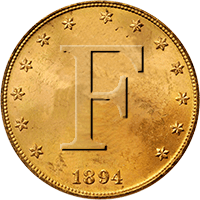First I recommend you go over to Demarco Detector Sales and equip yourself with a Sunray X1 probe, IMO these are manditory when hunting with an Explorer in the dirt. As they are pretty much just a 1 inch coil for your Explorer the probe has all the features your Explorer has, tone ID, pinpointing, etc and depth is a good 3 inches. If nothing else you will be less hesitant to dig a deep iffy knowing when you go in with the probe it will quickly tell you whether to continue digging or close up the hole and move on quickly to the next target. Target recovery is much faster. If its 95 freaking degrees and humid spending less time hunched over digging is a bonus. Because the X1 probe has such good depth and tone ID it will also help you recover more coins in holes where there are multiple coins. One problem with the Explorer is, once you open up the hole and there's air between the coil and the targets vs ground it loses depth. I can't tell you how many times I have dug a hole, recovered a coin, I 'think' I hear something else in the hole with the probe, check the hole with the big coil nothing...but the probe says give it a shot, dig a little deeper and 1 or 2 or in one case 7 more coins that were just progressively deeper into the hole. I NEVER use pinpoint mode with the stock coil, useless to me BUT I often use pinpoint mode with the probe. One problem with probes is once you open up the hole and you go in with the probe sometimes you get too close to the target, its screaming in your headphones but you can't pinpoint it because it seems like its everywhere, switch to pinpoint mode and the probe will put you right on top of it. Don't do what I did, I scoffed at the probe at first, I don't need no stinking probe bah, then I started digging deep holes after I learned the machine and what a nightmare. I was either chasing a nail poking into the hole sidways or I'd finally recover a nice silver coin AFTER I carved a big gouge into it with my digger. I finally purchased the probe and then kicked myself for waiting so long. The Sunray X1 probe ladies and gentlemen, my favorite accessory.
Now as for these signals that come and go, for newer users this tip will save you a lot of headache. The Explorer will pick up signals off to the sides/front,rear of your coil and if you don't have the coil centered over your target the depth of the target will also be way off, the depth meter is only accurate when you are centered over the target, if the target is off to one side the machine will report the target as being much deeper than it really is. Shallow clad is nortorious for this, the Explorer is pretty hot it can pick up shallow targets well outside the diameter of the coil. SO here's the tip, when you think you have found a target of interest, check the surounding area with your coil, I generally check a coil size area around my target so maybe an area 30 inches in diameter. I want to know what else is in the vicinity of my target because nearby targets can pull my pinpoint off center, a nearby target may be trying to mask my target, or my target may in fact be one of those nearby targets and I'm just not centered over it. This is especially important in an area of rusty nails, rusty nails throw a signal off sideways along the length of the nail, they can project a signal quite some distance and if you are picking up this signal off the side/front of your coil it often will be a high tone iron falsing signal trying to fake you out that its a coin. Often once you get centered over the nail it then ID's properly as a nail, even so there are some stuborn nails that false even when you are centered over them. The trick with them is turn 90 degrees and sweep the target again, did it go low like a nail? Yep its a nail. Another good trick for sniffing out rusty nails falsing is to watch where the cursor on the screen is hitting (smartfind or iron mask mode not digital). Rusty nails falsing are very reliable in this regard. They ID on the screen in two locations, top/left corner where they are supposed to ID, and far right edge of the screen, cursor half off the right edge of the sceen, cursor down from the top about in the silver half dollar area. As you sweep you will see the cursor bounce between those two locations, this is a classic bounce pattern, you may have heard some old timers talk about bounce patterns this is one I look for because its so reliable for properly ID'ing iron fasling.
Okay wow that's a lot of typing, I may have over did it on the coffee this morning.

